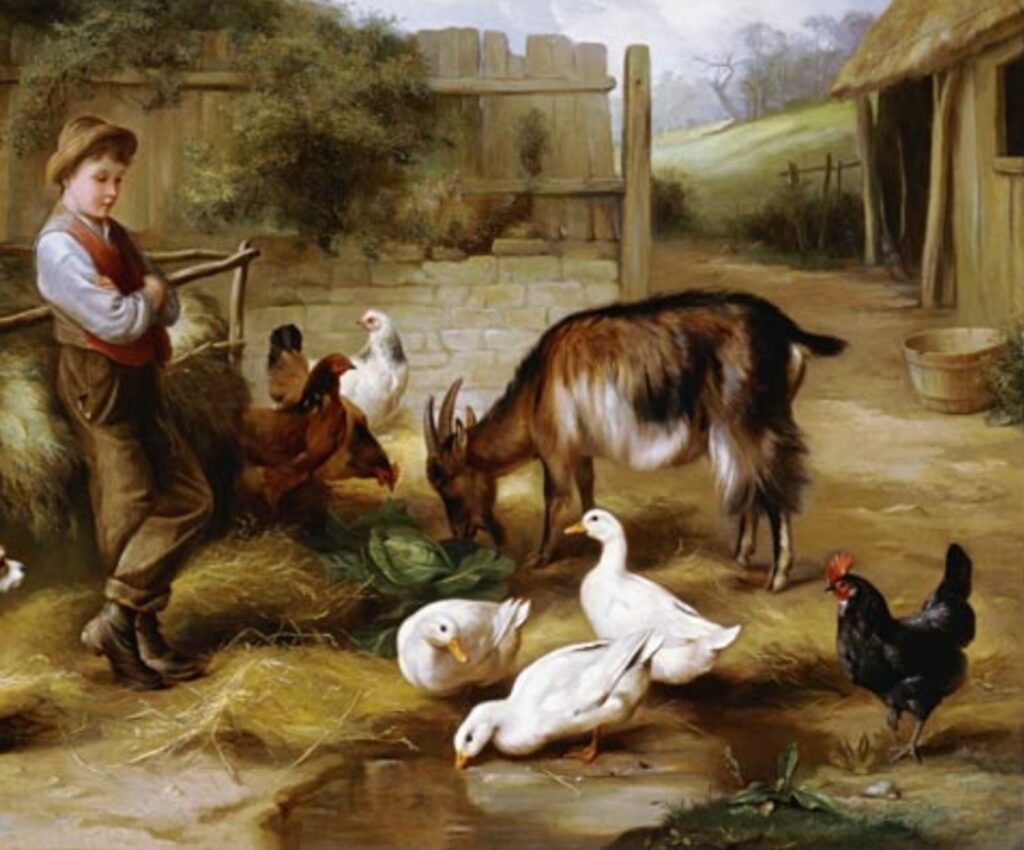
The Old English Goat Society was formed in June 2004 by a group of English Goat breeders, who recognised that two types persisted within the breed. The group wanted to research the smaller, shaggier, hardy and multi-purpose type with a more modest milk yield, reminiscent of those that were common in the UK before most of the Swiss breeds were imported.
The Old English Goat Society has developed a breed standard appropriate to our understanding of the breed in its present form and of its history. We believe that there is an important niche for this low input/low output goat, both now and in the future.
The Old English Goat Society Aims
- To promote the Old English Goat as a good all-round goat and to further knowledge of the breed, its history and future development.
- To maintain a Herd Book to enable the registration of all goats which conform to the breed standard and regulations.
- To publish annually an Old English Goat Register and Stud List.
- To provide links between and bring together Old English Goat breeders in the UK so that issues concerned with the breed can be aired.
- To produce a monthly newsletter.
Frequently Asked Questions:
Q: Does an Old English Goat need Concentrates / Hard-Feed?
A: As little as possible! Old English goats are far more likely to suffer ill-health from over-feeding in our experience. On a pasture-based system, Old English goats should be zero or near-zero input – thriving on grazing & browsing in the spring/summer/autumn, and enjoying species rich hay in the winter. If you’re milking your Old English goats try options such as dried/wilted nettles (high protein!) or grass-nuts, in your milking-stand bucket, before reaching for the sugary concentrates. N.b. Make sure you’re comfortable monitoring the overall health of your goats!
Q: Do Old English goats need mineral licks?
A: The answer to this question will vary depending upon your area of the country, as well as what sort of “system” you use to manage your goats (indoor vs outdoor, pasture vs non-pasture, etc). Some areas of the country are known to have mineral deficiencies, so local advice may be best. That being true, long term monitoring of a few large herds suggests that OE goats often don’t need supplimentary copper (like some goat breeds do), but that they do benefit from a high-zinc mineral lick. A high-zinc mineral lick improves both coat & skin health, which is crucial if outdoor-managed.
Q: How much milk does an Old English Goat produce?
A: This does vary across the breed as priority must be given to genetic diversity & overall breed health whilst numbers are critically low. Across the breed, milk outputs varies between 0.5L per goat per day, to 1.5L per goat per day, based on a single daily milking. 2L per goat per day is expected maximum output for the breed.
Q: Do Old English require Housing/Shelters?
A: This should be judged on a individual basis, carefully monitoring the health & welfare of your goats. Several large herds within the breed are successfully managed as 100% outdoor, relying on the “natural shelter” of land features and hedges/walls. APHA guidance states that outdoor goats in the UK must have access to shelter – but this can include natural shelter. The goats at the “Valley of the Rocks” in North Devon are a good example of this. Whilst not being full recognised as an Old English population (nor as a British Primitive one), they are very close to Old English goats in all respects.
Q: What sort of temperament do Old English Billies & Nannies have?
A: In this respect Old English goats are just as varied as any other breed of goat. As a general rule, animals sold for breeding should already have been judged & raised for a gentle temperament. Being slightly smaller than the modern dairy breeds, you may see less escaping behavior over the top of decent fencing, but any goat will always find the weak-point in your fencing. As with most breeds, aggressive male animals are not tolerated, and (we’d hope) would never be sold to new members/breeders/keepers.
Q: Where can I find stock for sale?
A: With Old English goat numbers still so low (Circa 250 animals, as of Spring 2024) you are very unlikely to find Old English goats for sale in the open market, be that on the various online portals, or at your local livestock mart. That situation will improve in the next few years, but for now we’d ask prospective new keepers/breeders to contact the society directly (email, or FB Messenger are best), and we’ll make every effort to join people up with any available stock.